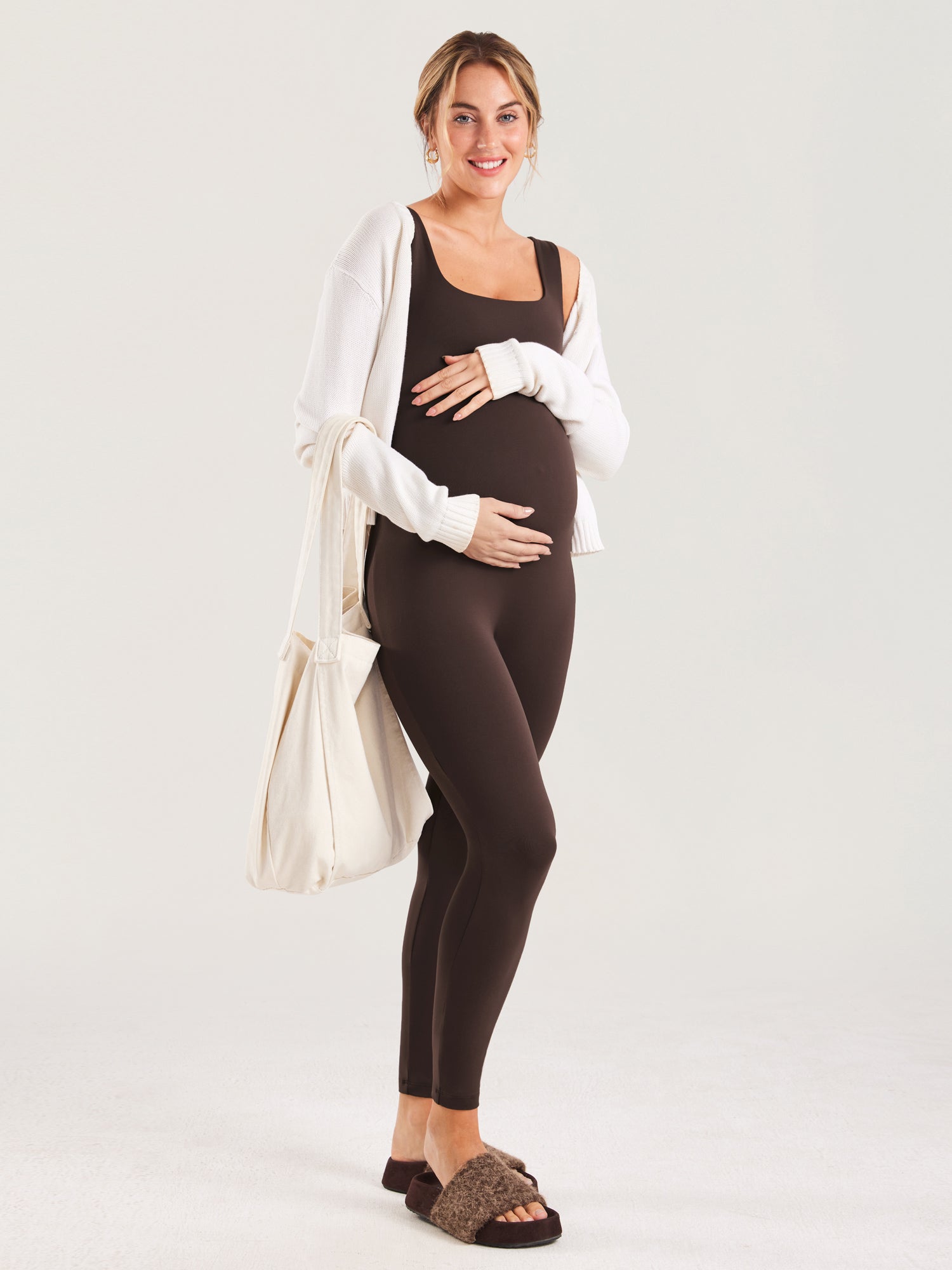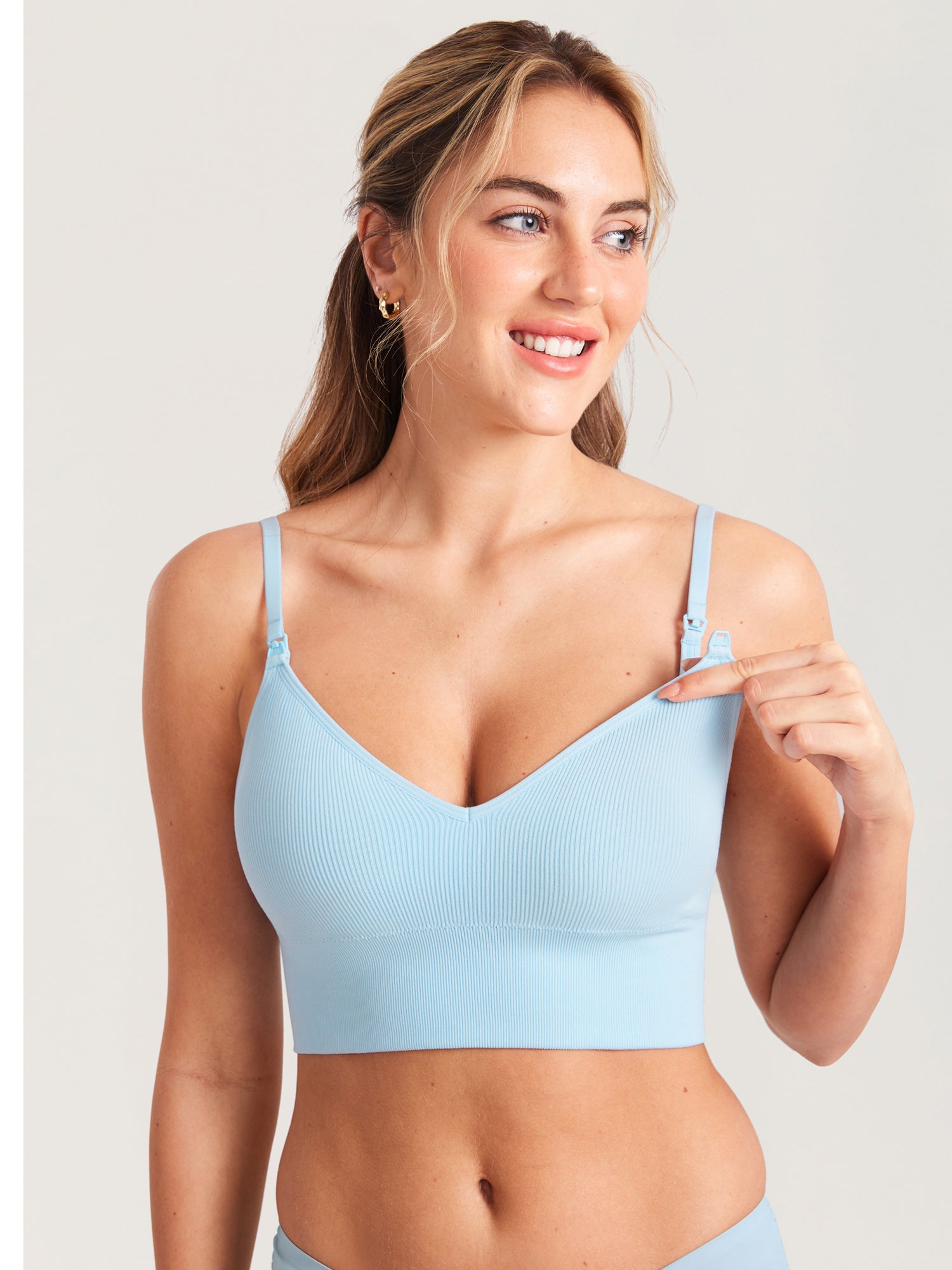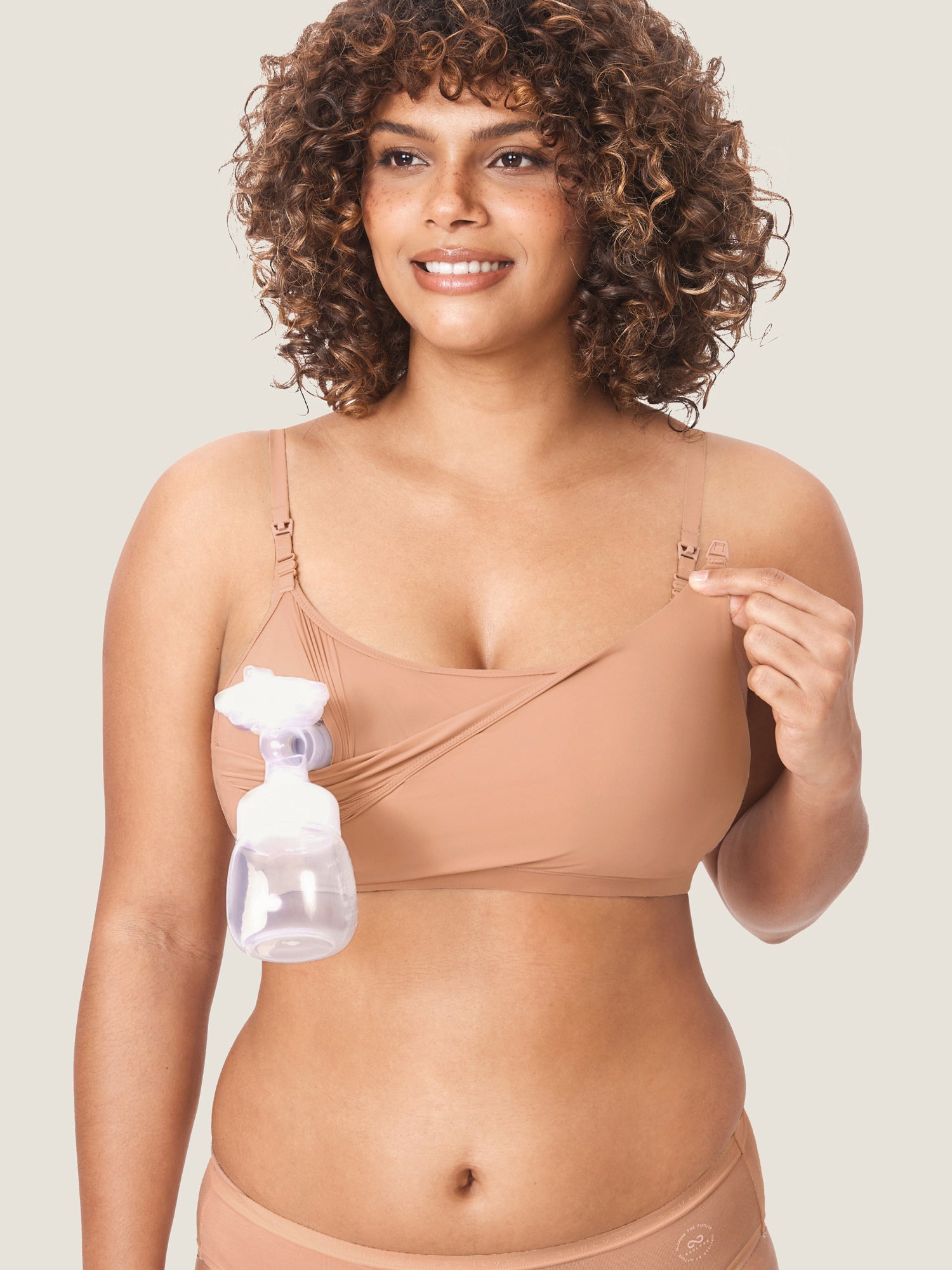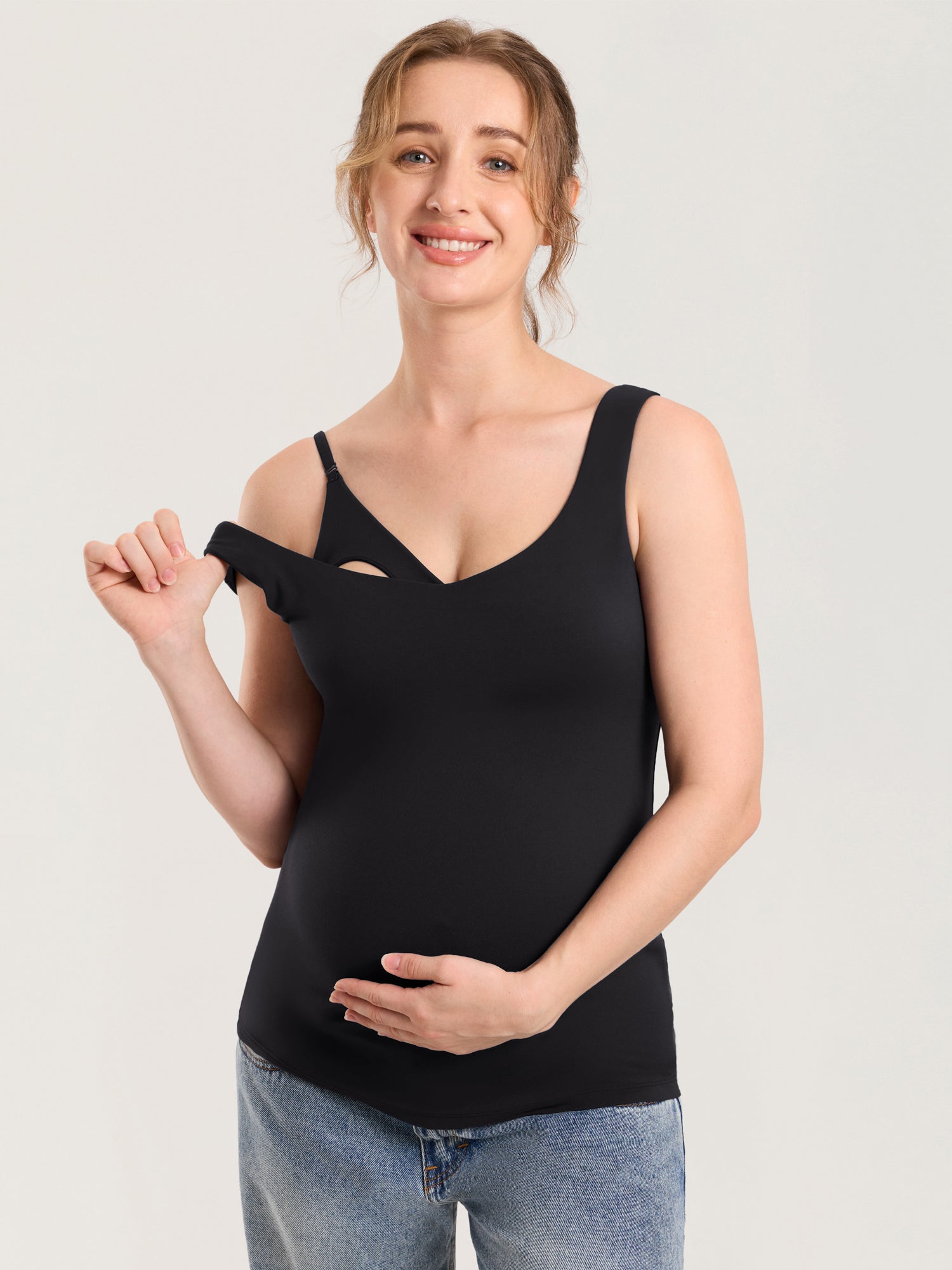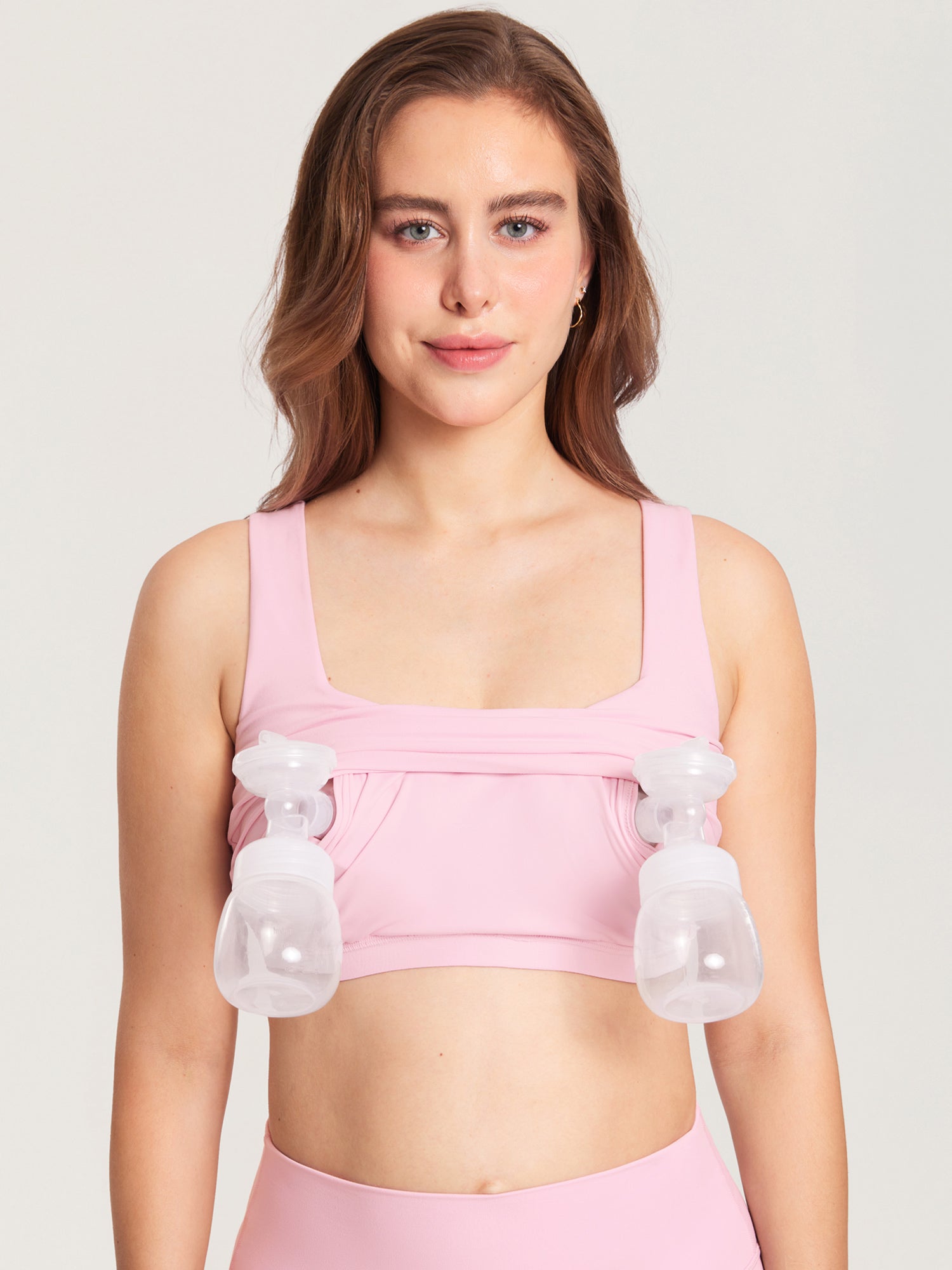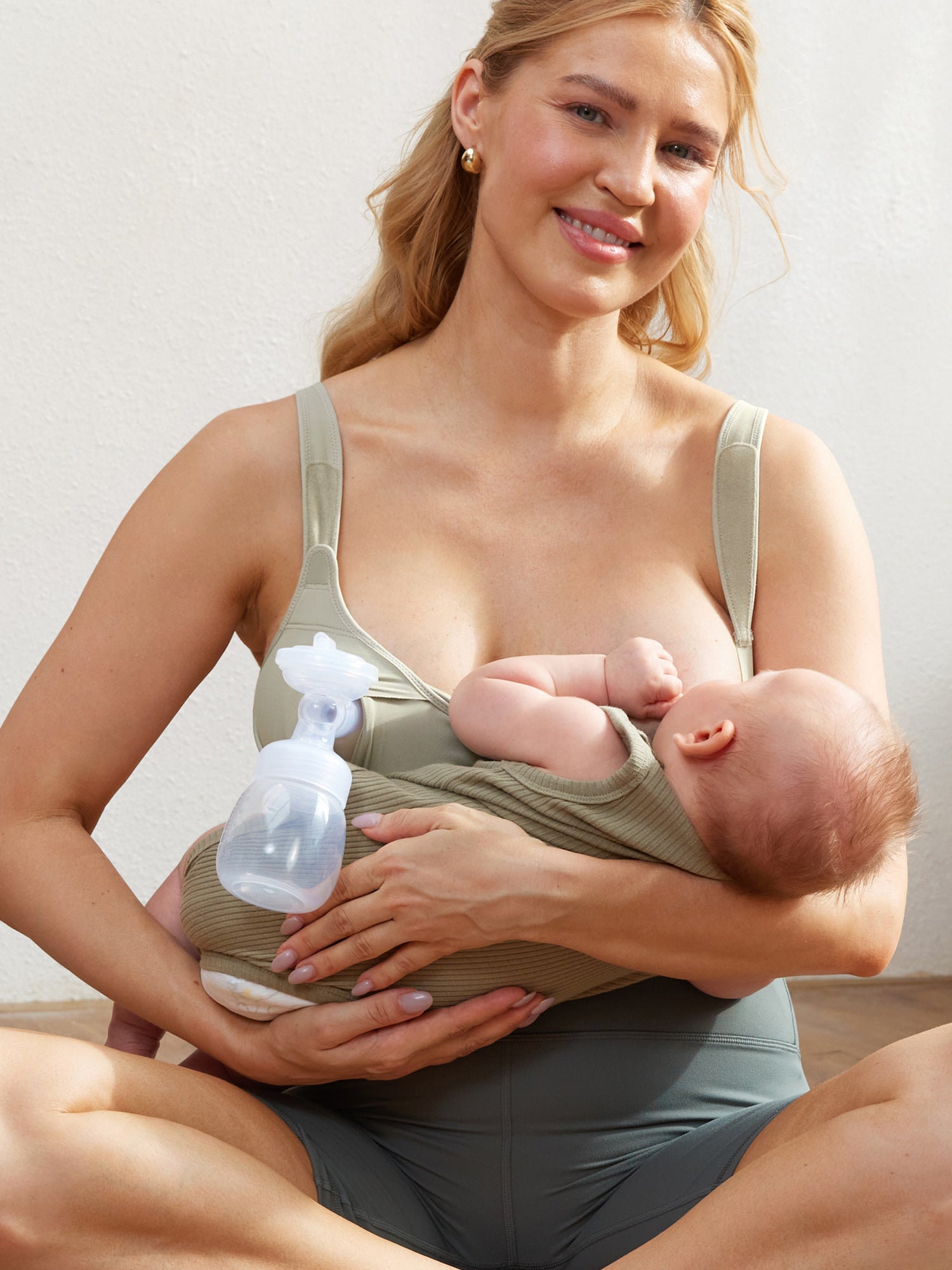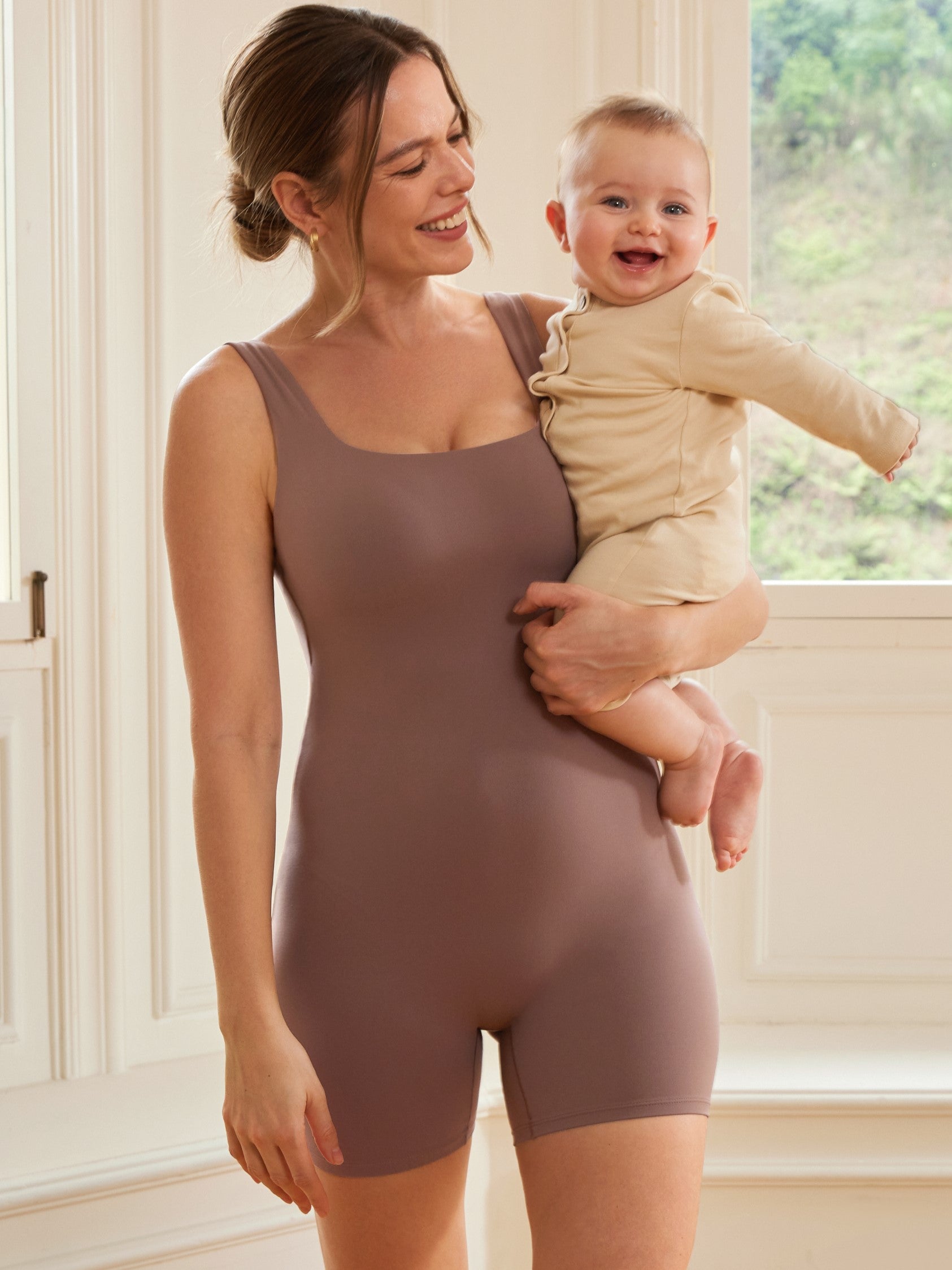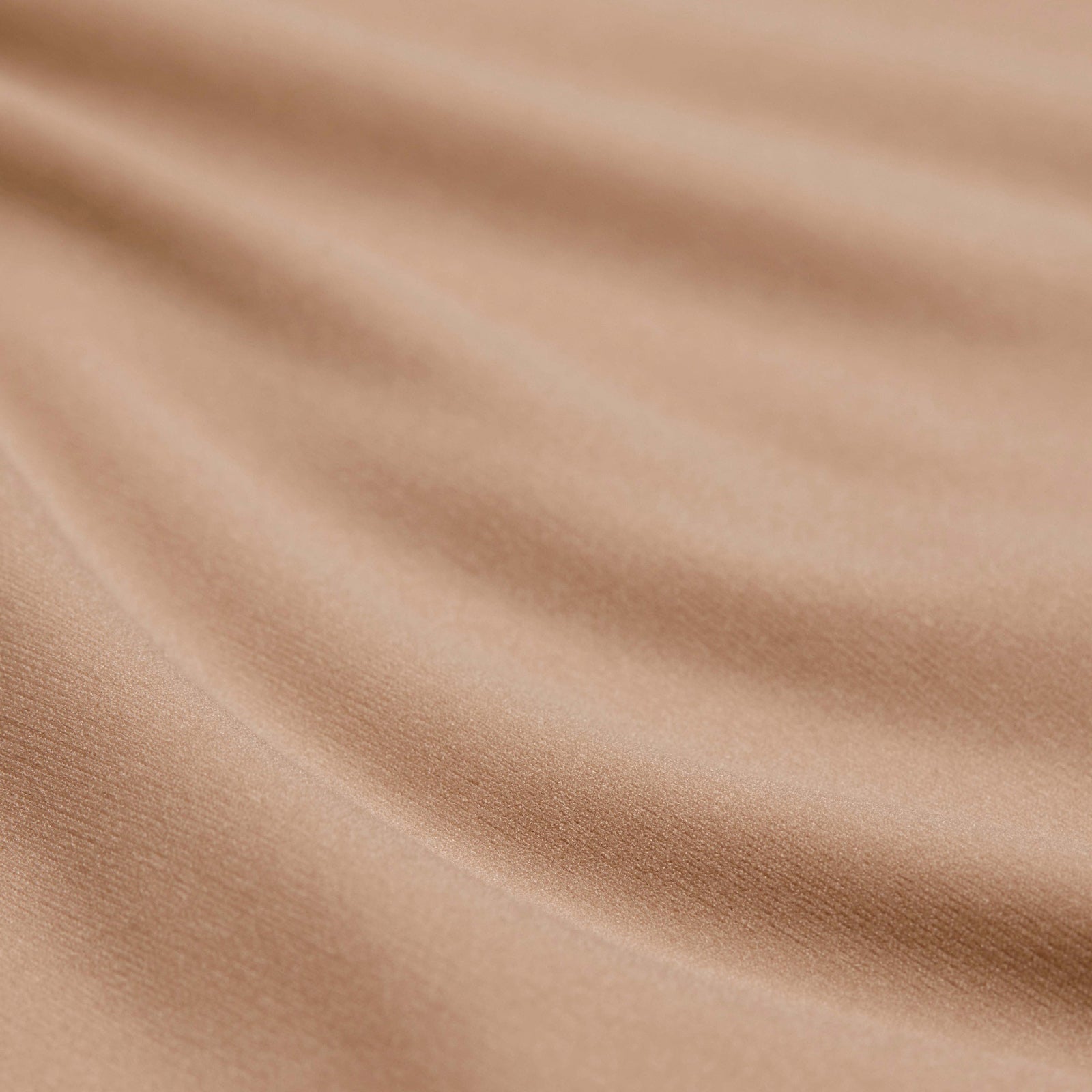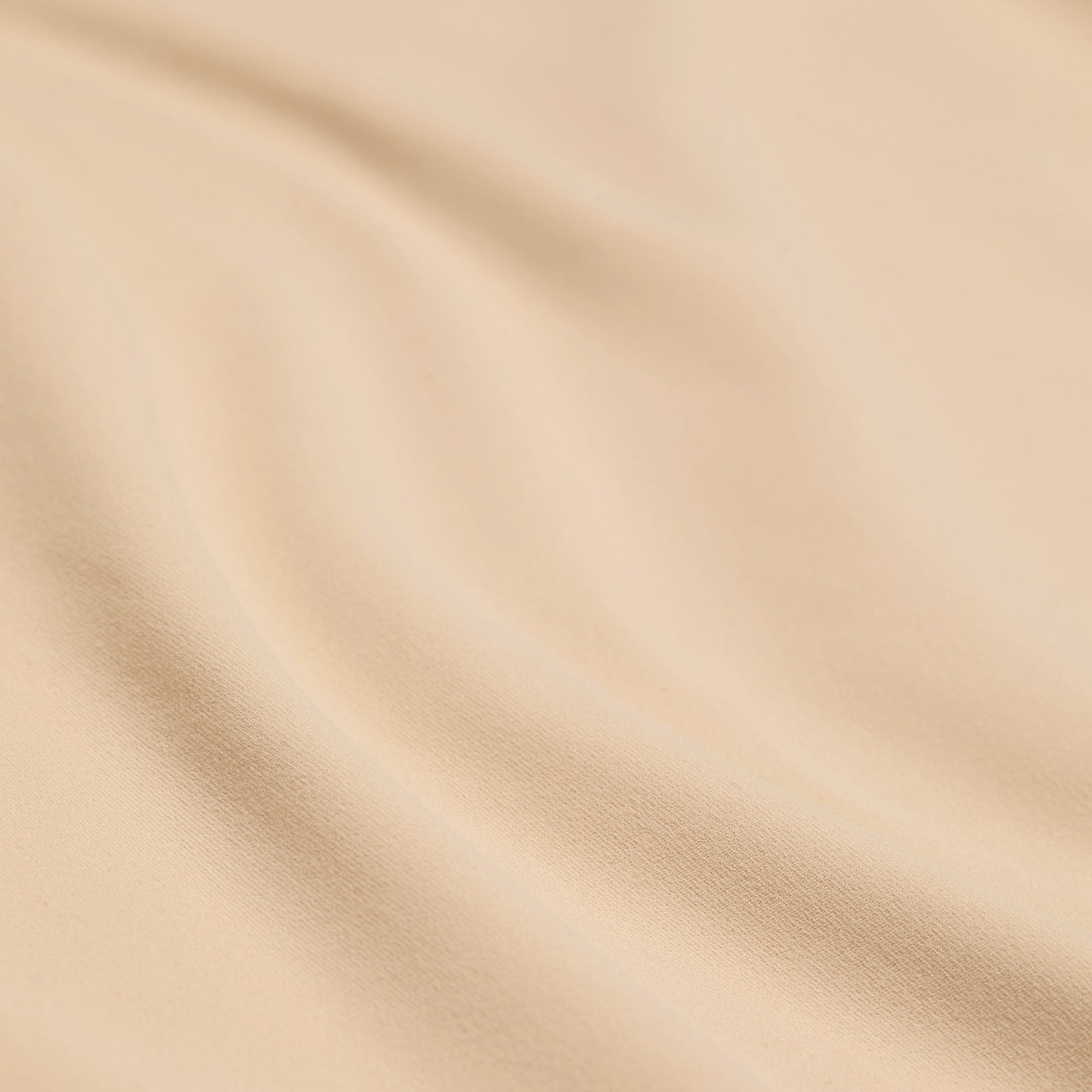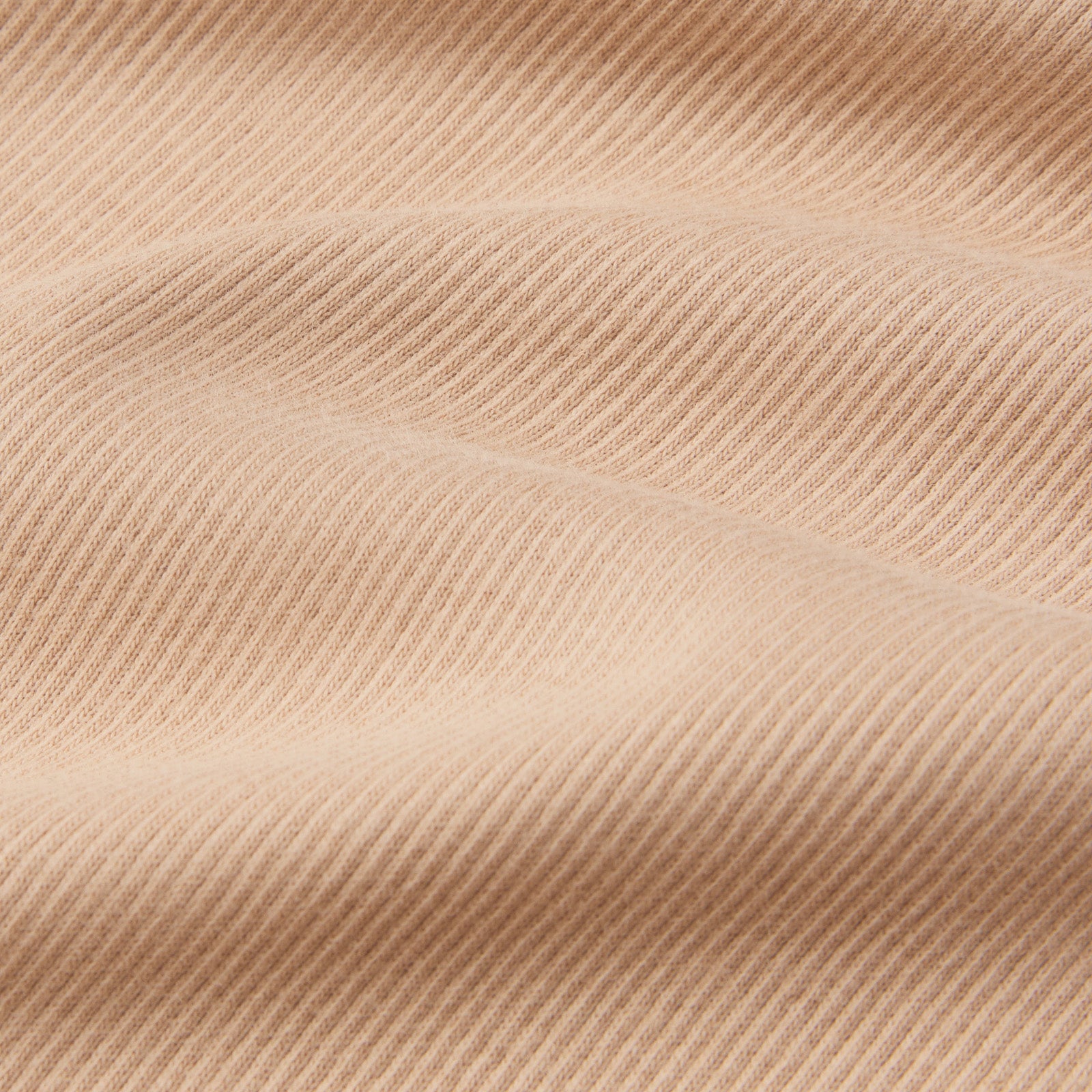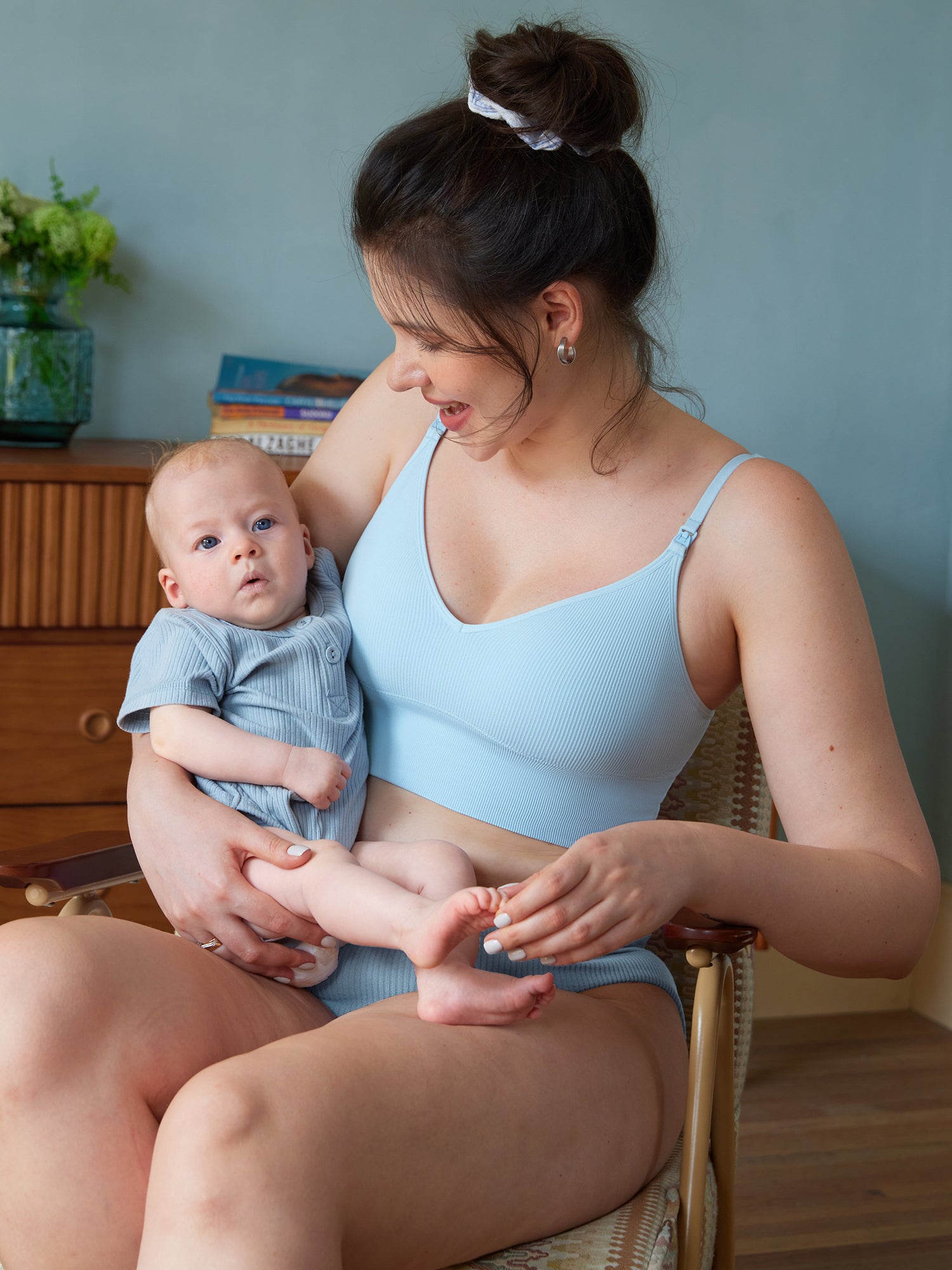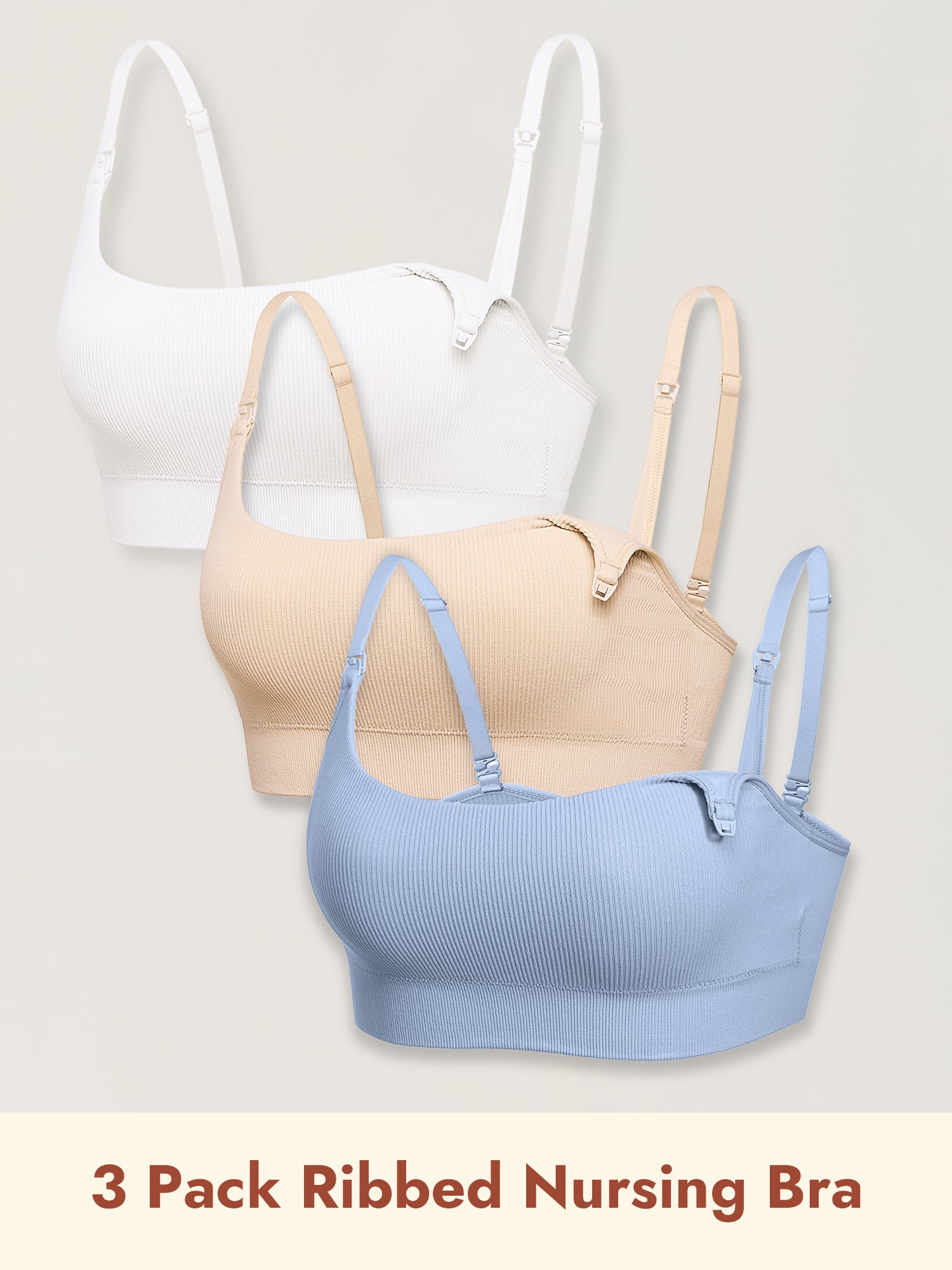When should I start pumping while breastfeeding?

If you are like many new moms, you are probably having a hard time integrating breast pumping into your already hectic life with a newborn. There's so much to learn between preparation, pumping, storing, and cleaning, and so much to do before everything is just right.
Knowing when and how to start pumping and how to keep the momentum going is sometimes the most challenging part of it all. This is true whether you are planning to pump occasionally, part-time, or full-time.
In this guide, we’ll cover everything from getting started with pumping, cleaning and storage tips, and pointers such as when to pump and more.
When to start pumping
If this is your first experience with pumping, you probably already have your pumping bra ready and are now wondering when you should start.
According to the AAP, consider waiting to use a pump until your baby is around 6 weeks old. Use only hand expression to remove any excess milk.
If your little one is healthy and gaining weight well, and there is no anticipated need for separation, there is no need to rush. When you wait, you’ll have the time to establish a breastfeeding routine before using a pump.
Some women opt to start pumping right after birth, though. Why is this? Here are a few reasons:
- The nurse or lactation consultant recommends it due to some specific reasons like low birth weight, a baby with low blood sugar at birth, or high bilirubin levels leading to jaundice
- If you are separated from your child for medical reasons, you may choose to pump and conserve the milk until you are reunited. In these cases, a lactation consultant educates you on how to pump to start your milk supply as well as supplement the baby's feedings
- Women who need to return to work often begin pumping three to four weeks before their return date to familiarize themselves with the pump and build a freezer cache of expressed milk
It is important to point out that pumping during pregnancy is not recommended. It has been shown to lead to the production of labor-inducing hormones in pregnant women, which can lead to premature births.
The best time of day to pump will depend on you and your baby’s schedules. However, most women produce the most milk first thing in the morning. This is because the hormone prolactin is produced as you sleep, which stimulates milk production as you rest. Plus, when your body is relaxed at night, it gradually resets and you jumpstart milk production for the day.
If you want to store extra milk, get up early in the morning, breastfeed your baby, then pump both breasts for 10 to 15 minutes. Label and store your milk correctly for future use. You can do this daily to build a big stockpile, or every other day if that’s what works for you.
Some breastfeeding moms also pump right after a nursing session or in between sessions to encourage milk production. This will also work. For example, if your baby is nursing every four hours, you can add a pumping session at the two-hour mark. Pumping between feedings is a technique that is usually recommended to women who are trying to boost their milk supply.
That said, if you are concerned about low milk supply, consult your lactation consultant and ask them to develop a pumping plan for you.
Today, most women go for electric breast pumps that simultaneously pump both breasts. If you're using an electric breast pump to pump after a nursing session, 10 to 15 minutes should be plenty.
If you're pumping to replace a breastfeeding session, increase the time to 15 to 20 minutes or until the milk stops dropping actively. It might take up to 30 minutes for some women to completely empty their breasts, so try to find what works for you.
On the other hand, some women find that using a manual hand pump or even hand expression improves their pumping outcomes. If this describes you, don’t worry about it. Everyone is unique. If you do not have or do not want to use an electric pump; you can still express the milk you need.
If you're away from your child for medical reasons, pump as often as your little one would feed (usually every 2 to 4 hours for infants) until the milk stops flowing, which should take approximately 15 to 20 minutes. This will trick your body into thinking there is a constant demand for breastmilk, which will increase production.
This is also true when pumping at work. Try to stick to the same routine at work as you do at home. For example, if you work an 8-hour day, you can:
- Breastfeed your baby in the morning before going to work
- Mid-morning, do one pumping session
- Repeat the session in 2 to 3 hours
- Do one more session before heading home.

Tips and tricks to help you get the most out of pumping
- Get ready to pump: Get comfortable and relax. You can even look at some photos of your little angel to help get that oxytocin hormone boost, which will jumpstart the milk ejection reflex
- Use the right-sized flanges: Using the appropriate size flanges is the first step toward a good pumping practice. Keep in mind that flanges are designed to be sized for your nipple size, not your breast. The wrong size can affect your supply and output, as well as cause nipple pain. If you are having trouble finding the perfect fit, talk to your lactation consultant.
- Do not forget about hydration and diet: Restricting calories too much may result in a decrease in milk output. According to the CDC, breastfeeding mothers should eat a healthy, balanced diet with 450 to 500 calories per day. And don't forget to drink plenty of water!
- Encourage your milk to letdown: To promote the letdown reflex, massage your breasts and/or apply a warm compress to them before pumping.
- Imitate your baby’s suckling pattern: With an electric pump, you can adjust the sucking speed as you pump. Start with a faster speed for a minute or so, then transition to a slower speed to mimic your baby's suckling patterns.
- Pump and nurse concurrently: Consider breastfeeding your infant on one side while pumping on the other to promote milk production.
- If pumping is painful, ask for help: Although it may take some time to become used to the pump, it should not be painful. Consult a lactation consultant if you're in pain or experiencing discomfort for an extended period of time.
- Don't assume that the amount you pump is how much the baby gets when they feed. In the early weeks, you may only pump a small amount of milk each time. Don’t despair because your little one can always get more milk from your breasts than a pump can! If you have concerns about your milk supply, consult your lactation consultant.
Cleaning and storage tips
Germs are everywhere, even on your breast pump. After each pumping session, make sure to clean your pump and all of its parts to avoid introducing germs to your child. Bottles, valves, breast shields (flanges), and everything else that comes into touch with breast milk fall into this category.
Be sure to check the manufacturer's instructions for cleaning instructions before washing any parts. Some parts can go on the top rack of the dishwasher. Otherwise, follow the steps below:
- Using cold water, rinse any parts that have come into contact with your breast milk
- Separately, wash each pump part in warm water with liquid dishwashing soap. Use a clean bowl to do this
- Rinse each part with hot water for about 10 seconds and air dry
- Once everything is nice and dry, reassemble your pump. Avoid touching the inside parts with your hands
- If you get milk in the tubes, wash them and hang them to dry as well
Breast milk should be stored in the fridge or freezer as soon as possible. At the very least, this should happen within 4 hours after pumping, especially if the room temperature is above 77°F (25°C). According to the CDC, breast milk can sit out at room temperature for up to 4 hours and still be safe for babies.
When you store your breast milk in the fridge, keep it in the back, not the door. Make sure the temperature is at 40 degrees Fahrenheit (4 degrees Celsius). Breast milk can be kept in the fridge for 4 to 5 days under these conditions.
If you need longer storage, place the breast milk in the back of the freezer. This will allow it to last for about 6 to 12 months. Previously frozen milk can be left out at room temperature for 1 to 2 hours once thawed. Milk can be stored in the refrigerator for up to 24 hours after it has been thawed. Don’t refreeze previously frozen breast milk.
Benefits of pumping
There are numerous benefits of pumping. Most of them will apply whether you're exclusively pumping to feed your baby or trying to maintain your supply when you return to work. Here are some of them:
- Pumping is a great way to get extra milk for storage. Not every mom has to pump. However, those who do get the extra flexibility that comes with having some extra milk in storage. This allows partners or family members to assist with feedings, as well as the option to tag-team overnight and have someone take over a feed while you sleep.
- It is a great way for the baby to learn to take a bottle: Once you have been breastfeeding your little one for at least 4 weeks, you can start giving them the bottle at least thrice a week. This will help them understand both how to breastfeed and take a bottle. This is important especially if you eventually have to go back to work and be away from your little one.
- You can provide breast milk during supplemental feedings: If your baby needs supplemental feedings, or if they are unable to nurse effectively for one reason or another, pumping allows you to provide breastmilk during supplemental feedings.
Final Thoughts
Getting started in the right way is crucial for pumping success whether you're pumping exclusively or building a stash for when you return to work. The good news is that it is possible to get the most out of your sessions by learning the ins and outs of your pump and understanding the best pumping practices. And as you do, be sure to also use the right pumping bra for the best results. Good luck!
How to make pumping while traveling easier
Apr 27, 2022 AngeliaSmith
The ultimate list of feeding supplies for newborns
Apr 27, 2022 SamanthaHoare
When should I start pumping while breastfeeding?
Apr 25, 2022 AngeliaSmith
Everything You Need to Know Before You Start Pumping!
Mar 29, 2022 SamanthaHoare
Your Guide to Breast Pumps in 2022
Mar 25, 2022 AngeliaSmith
The ultimate list of travel essentials for newborns
Feb 21, 2022 AngeliaSmith
SUBCRIBE FOR NEWSLETTER
Shop today with 10% OFF your first order of all products storewide

